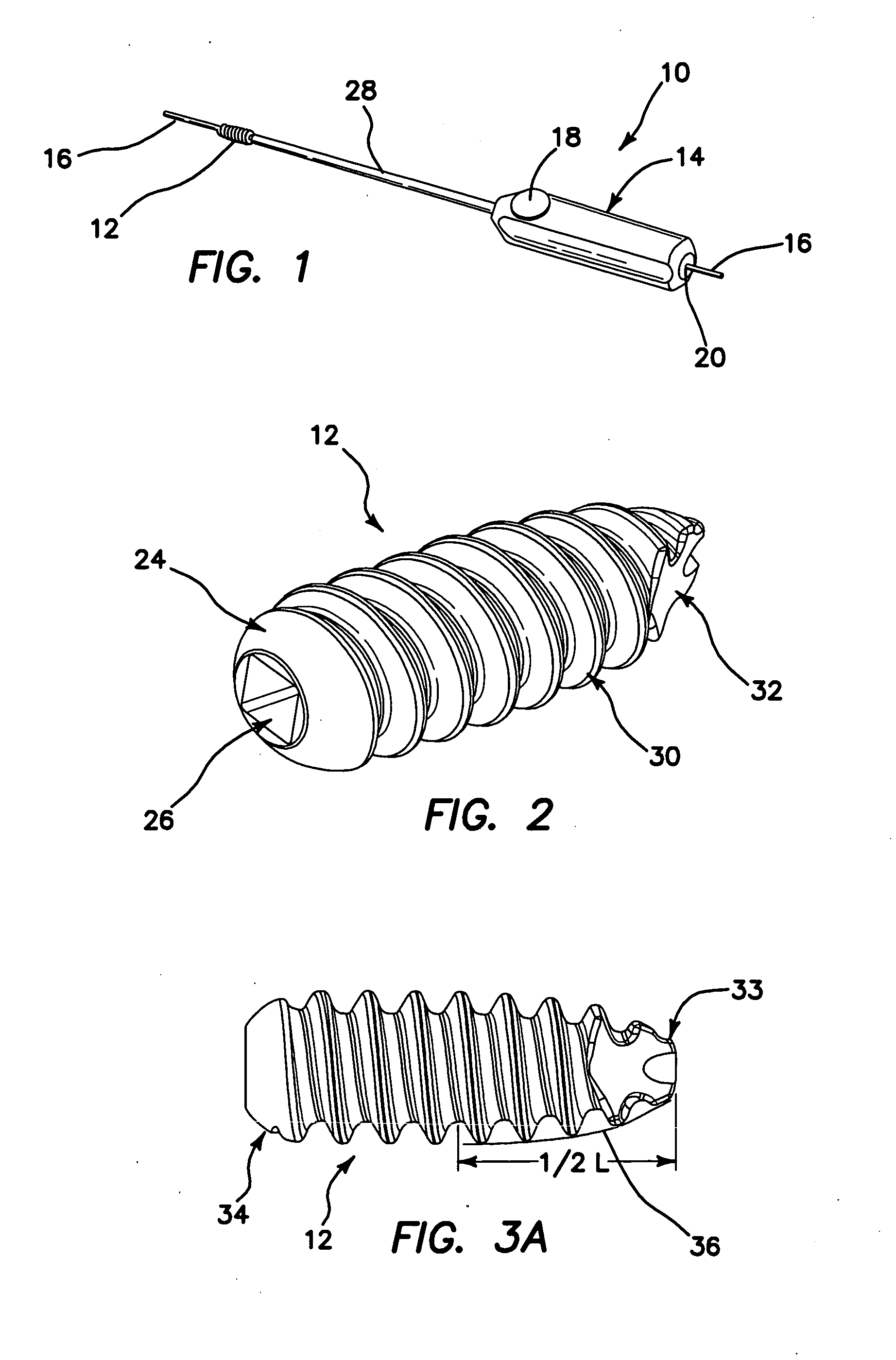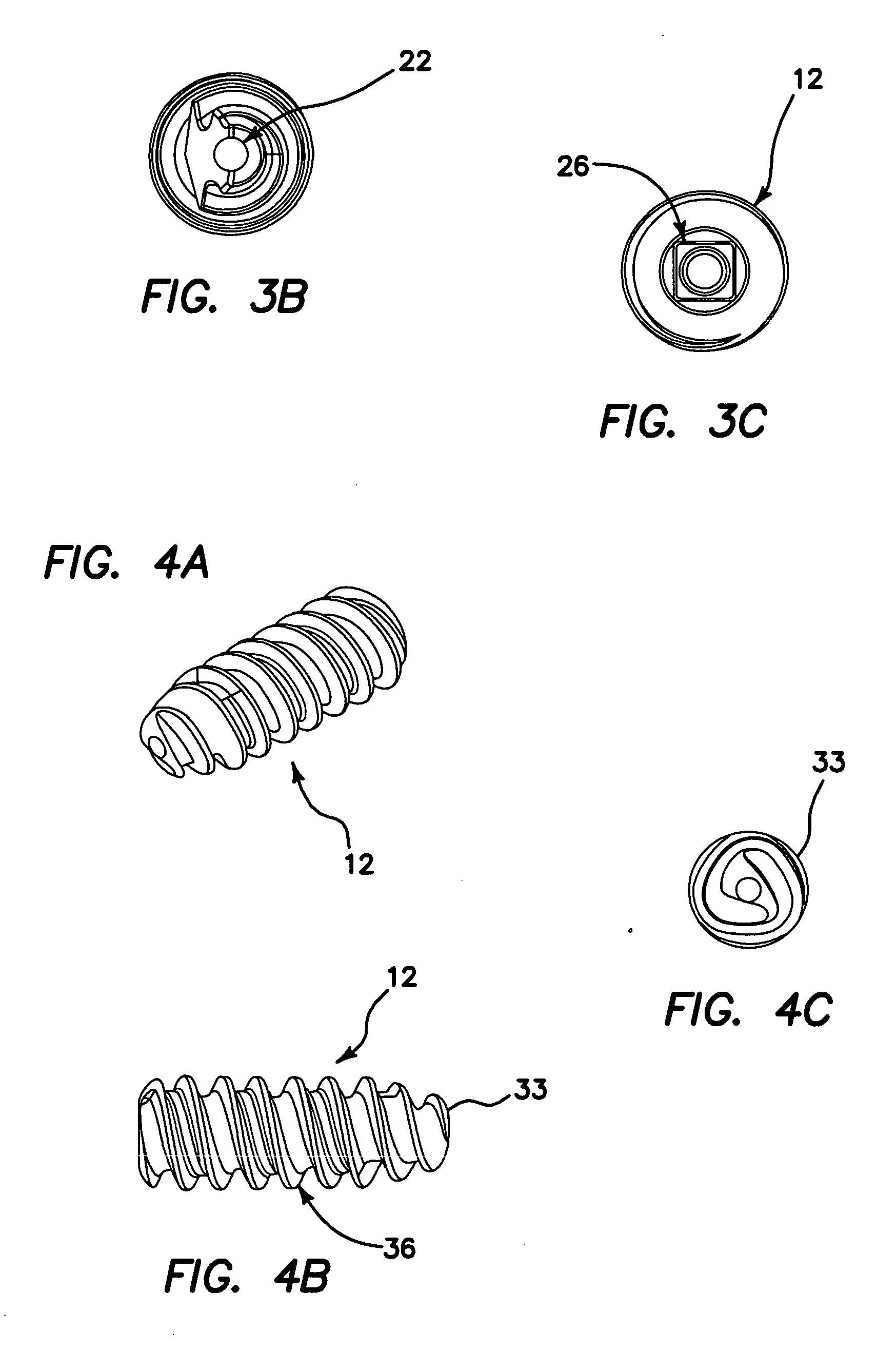Self-tapping biocompatible interference bone screw
a biocompatible, bone screw technology, applied in the field of soft tissue or bone-to-bone fixation devices, can solve problems such as interfering bone graft fit, and achieve the effects of reducing confusion, improving interference screw pull-out strength, and increasing density
- Summary
- Abstract
- Description
- Claims
- Application Information
AI Technical Summary
Benefits of technology
Problems solved by technology
Method used
Image
Examples
Embodiment Construction
[0029]Referring now more particularly to the drawings, there is shown in FIG. 1 an interference screw anchoring system 10, which comprises an interference screw 12, a driver 14, and a guide wire 16, along which the driver 14 and interference screw 12 may be guided to a desired operative site.
[0030]The inventive interference screw 12 is intended for the bone-patellar tendon-bone reconstruction of the ACL, but may be used in other applications as well. During an ACL reconstruction procedure, BPTB grafts are fixed to the femur and tibia, utilizing the inventive interference screw 12. BPTB grafts are typically harvested from the patient's ipsilateral leg, but cadaveric grafts are also acceptable. The interference screw is packaged sterile, and is designed to provide compression of a BPTB graft within the femoral and tibial tunnels at the procedural site. The driver 14, and other system components comprising the instrument set 10 are designed to be reusable. A disposable kit provided wit...
PUM
 Login to View More
Login to View More Abstract
Description
Claims
Application Information
 Login to View More
Login to View More - R&D
- Intellectual Property
- Life Sciences
- Materials
- Tech Scout
- Unparalleled Data Quality
- Higher Quality Content
- 60% Fewer Hallucinations
Browse by: Latest US Patents, China's latest patents, Technical Efficacy Thesaurus, Application Domain, Technology Topic, Popular Technical Reports.
© 2025 PatSnap. All rights reserved.Legal|Privacy policy|Modern Slavery Act Transparency Statement|Sitemap|About US| Contact US: help@patsnap.com



